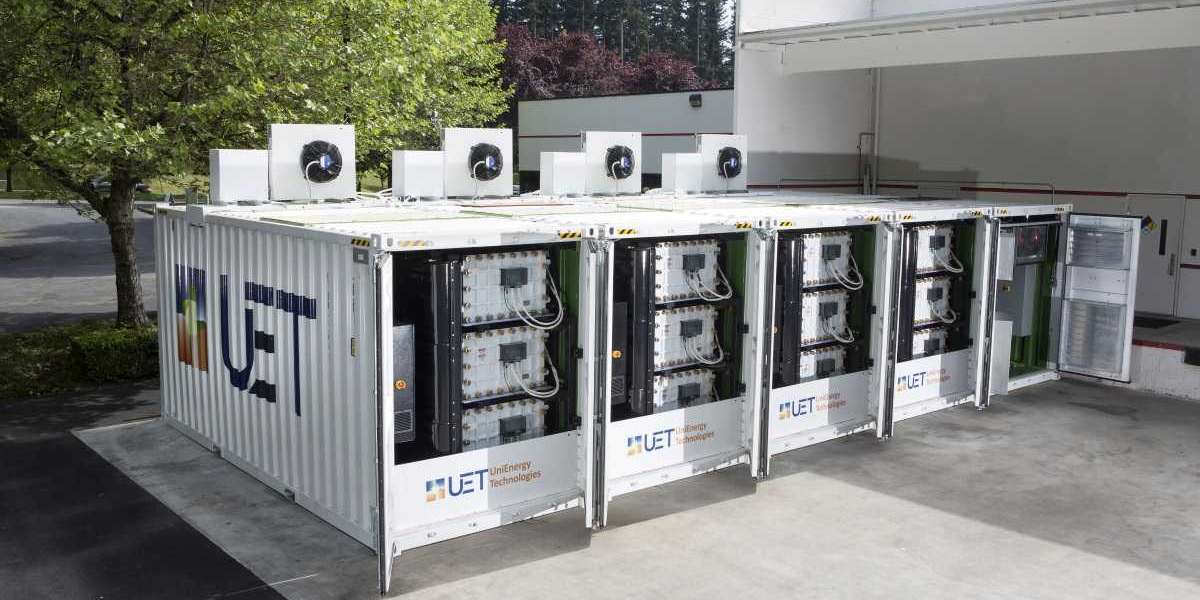The Canada Advanced Energy Storage Systems Market has seen significant growth in recent years, driven by the increasing demand for energy reliability, sustainability, and the integration of renewable energy sources into the grid. As the country looks to reduce its carbon footprint and transition towards a greener economy, advanced energy storage systems (AESS) are emerging as a key component in achieving these goals. The market is experiencing innovations in storage technologies, growing investments in energy storage projects, and supportive government policies, which are fostering the expansion of energy storage solutions across the nation. In this article, we will explore the key drivers, market trends, challenges, and future outlook of the Canada advanced energy storage systems market.
Market Overview
Canada is one of the world's leaders in clean energy production, with a vast supply of renewable energy resources, including hydroelectric, wind, and solar power. However, integrating these intermittent energy sources into the power grid requires effective energy storage solutions. Advanced energy storage systems (AESS) play a vital role in overcoming challenges related to energy variability, grid instability, and the need for peak demand management.
Key Technologies in the Advanced Energy Storage Systems Market
There are several technologies used in advanced energy storage systems that are driving the growth of the market in Canada. Some of the prominent ones include:
1. Lithium-Ion Batteries
Lithium-ion (Li-ion) batteries dominate the energy storage sector due to their high efficiency, compact size, and scalability. These batteries are widely used in various applications such as grid balancing, residential, commercial, and industrial energy storage. In Canada, both public and private sectors are increasingly adopting Li-ion battery storage solutions for their ability to store excess energy generated by renewable sources.
2. Flow Batteries
Flow batteries, including vanadium redox and zinc-bromine flow batteries, are gaining traction in large-scale energy storage projects due to their long cycle life and scalability. These batteries are particularly well-suited for applications where long-duration storage is required, such as in renewable energy integration and grid stabilization.
3. Compressed Air Energy Storage (CAES)
Compressed Air Energy Storage (CAES) is another promising technology used for large-scale energy storage. CAES systems store energy by compressing air in underground caverns or containers and then releasing it to generate electricity when needed. This technology is ideal for providing long-duration energy storage and is being explored for use in Canada’s energy infrastructure.
Market Drivers
Several factors are driving the growth of the advanced energy storage systems market in Canada:
1. Renewable Energy Integration
Canada has set ambitious renewable energy targets, including a commitment to achieving net-zero emissions by 2050. With a growing reliance on solar, wind, and hydroelectric power, integrating renewable energy into the grid presents challenges in terms of supply-demand balancing. Advanced energy storage systems allow for the efficient capture and storage of excess renewable energy, which can be used when demand is high or when renewable generation is low.
2. Government Policies and Incentives
The Canadian government has introduced several policies and incentives to support the development and deployment of energy storage technologies. Programs such as the "Energy Innovation Program" and the "Clean Growth Program" provide funding for energy storage projects, further incentivizing investment in AESS.
3. Demand for Grid Modernization
As Canada continues to upgrade its power grid infrastructure, advanced energy storage systems are seen as essential for ensuring grid stability and reliability. AESS can enhance the resilience of the grid by enabling quick responses to fluctuations in demand and improving the efficiency of power distribution.
Challenges in the Advanced Energy Storage Systems Market
Despite the promising growth of advanced energy storage in Canada, there are several challenges that need to be addressed for the market to fully thrive:
1. High Initial Investment
One of the key barriers to the adoption of AESS in Canada is the high initial capital investment required for setting up advanced energy storage systems. While the technology offers long-term benefits in terms of cost savings and efficiency, the upfront costs can be prohibitive for some businesses and utilities.
2. Regulatory and Policy Uncertainty
The evolving regulatory landscape surrounding energy storage can create uncertainty for investors and developers. Clear and consistent policies at the federal and provincial levels are crucial to provide a stable environment for energy storage projects.
3. Technological Challenges
While advanced energy storage technologies have come a long way, challenges such as battery degradation, limited energy density, and the need for improved storage capacities remain. Ongoing research and development efforts are essential to overcoming these hurdles and enhancing the efficiency of AESS technologies.
Market Trends and Future Outlook
The Canada Advanced Energy Storage Systems Market is poised for continued growth, with several emerging trends shaping its future trajectory.
1. Increasing Adoption of Distributed Energy Storage
The shift towards decentralized energy production and consumption is driving the adoption of distributed energy storage systems. Homeowners, businesses, and industrial facilities are increasingly installing their own energy storage systems to manage energy consumption and improve resilience. This trend is expected to grow as the cost of energy storage systems continues to decline.
2. Hybrid Systems and Integration with Electric Vehicles
The integration of energy storage systems with electric vehicles (EVs) is becoming a notable trend in Canada. EVs can act as mobile energy storage units, and when paired with home or business storage systems, they can help optimize energy usage and reduce reliance on the grid. The hybridization of energy storage technologies will play a significant role in meeting Canada's future energy demands.
3. Advancements in Solid-State Batteries
Solid-state batteries are emerging as a potential breakthrough technology in the energy storage sector. These batteries offer higher energy densities, improved safety, and longer lifecycles compared to traditional lithium-ion batteries. As research and development efforts progress, solid-state batteries could become a dominant technology in Canada's advanced energy storage systems market.
4. Growing Investments and Collaborations
Private and public sector investments in energy storage projects are expected to rise significantly in the coming years. Additionally, strategic collaborations between technology developers, utilities, and government agencies will help accelerate the deployment of advanced energy storage systems across Canada.
Conclusion
The Canada Advanced Energy Storage Systems Market is at a pivotal point in its development. With significant technological advancements, government support, and a growing demand for sustainable energy solutions, advanced energy storage systems are set to play a critical role in Canada's transition to a low-carbon economy. While challenges such as high upfront costs and regulatory uncertainty remain, the future outlook for the market is highly positive, driven by continued innovation, increasing investments, and the need for energy grid modernization.
More Trending Reports
MENA Solar Energy Market Share








